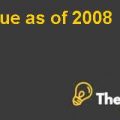
SINGAPORE AIRLINES: IN TALKS TO INVEST IN JEJU AIR Case Solution
First, should SIA invest in Jeju Air? Second, would SIA be better off without its low-cost carriers?
Whether Singapore Airlines SIA should invest in Jeju Air can be analyzed through the qualitative analysis and discussion on the benefits that could be drive from such investment.
Through this investment SIA will diversify its investment portfolio. It will get business exposure in the high growth regions of South-East Asia. The company has been experiencing competition from the other leading airlines such as Emirates, Qatar airways and other Gulf Airlines. This investment will help the company to target these new business segments with low cost carrier, since Jeju is a low cost carrier. As per the industry analysts, the business prospect for the low-cost carriers is high. The air services have less exposure of low-cost carrier in the South and North Asian region and there are opportunities for these low-cost carriers to capture the market and target the customers that prefer low cost carriage.
As compared to Southand West Asia, North Asia has more positive growth in the passenger traffic. In 2004, the passenger traffic that travels between Singapore and North Asia grew from 13.25 million in 2013 to 13.78 million in 2014 with an average growth rate of 4% (CAPA Centre For Aviation, 2015).
Jeju Airlines,which began its operations in June 2006, is a South Korea’s third largest airline. The company serves the market in China, Guam, Hong Kong, Japan, Korea, Northern Mariana Islands, Philippines, Taiwan, Thailand and Vietnam with its airline fleet consisting of 18 Boeing 737-800 aircrafts. Jeju airline has highly feasible business and has planned to have tripled their earnings until 2020. Hyundai Securities analyst, Yong Jun, has argued that the investment is favorable for both the company as this will ensures cost synergies for both. The geographical coverage will be increased for the both airlines, which would in more customers and business as well as they solidifies their competitive advantage with the effective cost management and increased geographical reach of services.
The investment is highly feasible for the SIA. South Korean market has been growing in relation to the tourism sector of Singapore. As per CAPA analysis report, the number of visitors has been increased with the growth of 14% in 2014. The report identify that the number of people travel to Singapore for tourism has been grow to 200% since 2009. Moreover, the capacity from Singapore to South Korea has been increased by 7% (CAPA Centre For Aviation, 2015).
Thus, overall the investment suggests a favorable business decision by the Singapore airlines. The analyst argument and the analysis by the CAPA show that this investment will bring positive results for the SIA. The market has been increasing and the growth is likely to increase. The cost will be reduced significantly. Moreover, as the former investment of SIA in the airlines, this investment is going to be highly profitable since the company has high earnings and the prospect earnings is planned to be triples in the coming future.
The question whether SIA’s performance would have been better had he had not invested in the low-cost carriers such as Tigerair, Scoot and Virgin Australia is arguable. These low-cost carriers are being facing intense competition which has been impacting their businesses. The financial performance has been in a declining state. The fully-owned subsidiary, Scoot, has been in loss since its inception. The overall negative performances of these subsidiaries have been affecting the SIA profitability. However,it can be said that as the economy gains recovery these businesses will bring up high profitability for the company. These low-cost carriers provide services in different market locations and provide SIA to have exposure in different passenger markets. Thus, if the situation is going to be remain same then it could be said that SIA would have been more profitable and stable if ithad not invested in these low-cost carriers................
This is just a sample partial case solution. Please place the order on the website to order your own originally done case solution.










